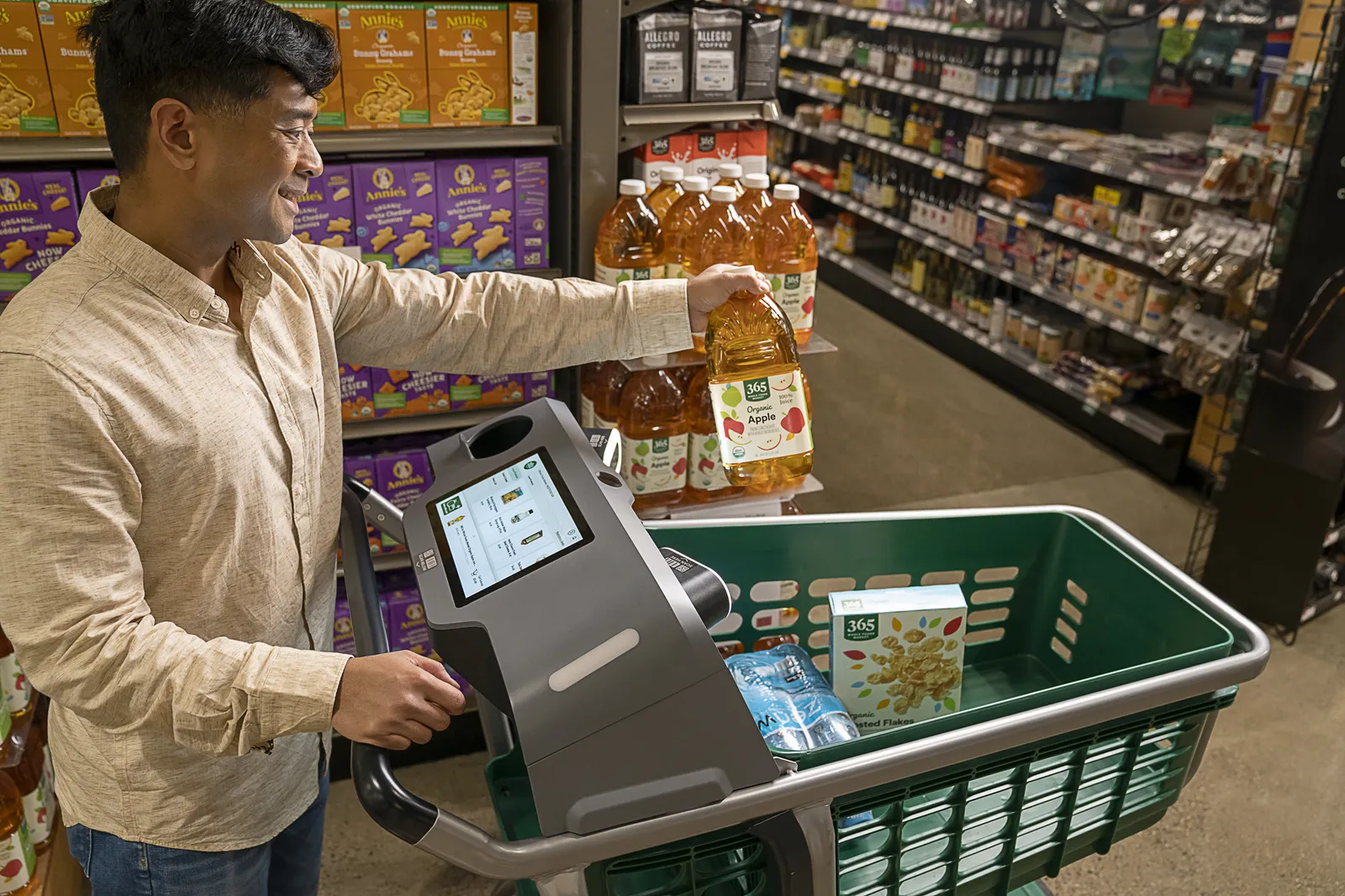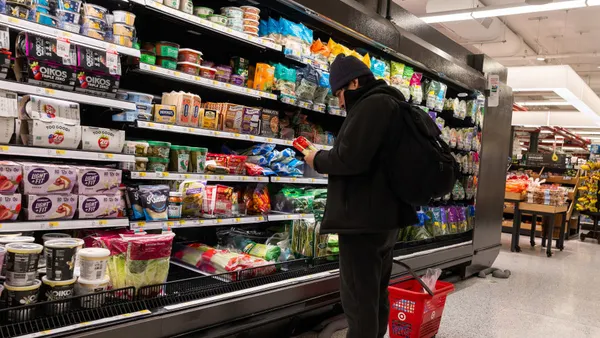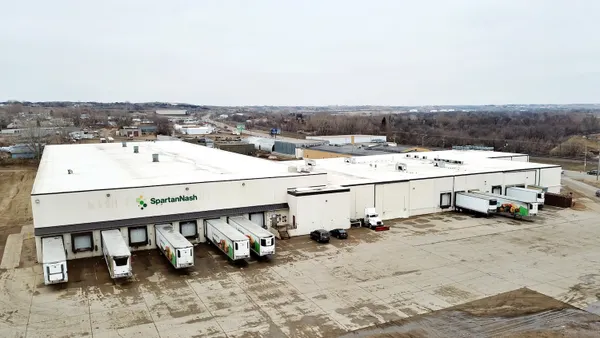Dive Brief:
- Increased adoption of technologies like smart carts, digital coupons and recipe apps by shoppers is in the forecast for what grocery shopping will look like within the next two to three years, according to a new report from 84.51°, Kroger’s retail analytics unit.
- The report also predicts the continuation of cost-conscious behavior and a rise in health-oriented shopping.
- Functional benefits, clean ingredients and high protein are the top nutritional benefits sought after by shoppers for innovative products, especially ones under the age of 55, the report found.
Dive Insight:
While the report’s findings indicate that already popular digital tools like coupon apps and cashback apps will continue to grow, lesser-used tech like smart carts are expected to see a boom within just a few years.
Just 10% and 11% of surveyed shoppers, respectively, said they currently use meal-planning apps and smart carts and will continue to do so. But more than 40% of shoppers said that while they don’t use these technologies now, they plan to in the future.
The report is based on findings from a survey of 400 Kroger shoppers.

That’s a big forecasted jump for smart carts, which grocers and technology companies are currently piloting and tweaking to make more attractive to shoppers. As grocers continue to ramp up their in-store retail media, smart carts offer new advertising opportunities for CPGs and grocers.
Taking a look at customer preferences for new and innovative products, 84.51° asked consumers which nutritional benefits they would most like to see. While some of the responses varied by age cohorts, the report noted that, overall, high protein, clean ingredients and functional benefits ranked highest. Those attributes were in the top three for people ages 18-34 and people ages 35-54.
High protein ranks as the top nutritional benefit shoppers seek
Varying preferences by age cohorts will also impact how grocers prepare for the future. For example, the spending power of Gen Z — people currently ages 12 to 27 — is expected to grow to $12 trillion by 2030, NielsenIQ forecasts.
The 84.51° report’s analysis of age cohorts found that older shoppers surveyed said they have an easier time planning their grocery trips than younger ones. To help make grocery planning smoother, the report suggested grocers make changes like improving online shopping list functionality, offering more digital coupons and providing recipe ideas, flagging the importance of real-time inventory updates and accurate pricing.
The report noted that grocers have room to improve the ease of meal prep and cooking and offered five suggestions:
- Increasing variety and affordability of meal kits and grab-and-go items
- Having more recipe ideas both in-store and online, with the latter personalized to match customer preferences
- Serving up better deals on prepared foods and meal kits
- Offering competitively priced pre-cut or prepared ingredients
- Boosting the selection of healthier and dietary-specific ready-made meals.
“Overall, customers foresee a more personalized, efficient, and technology-driven approach to grocery shopping while also being mindful of their budgets,” the report said.














